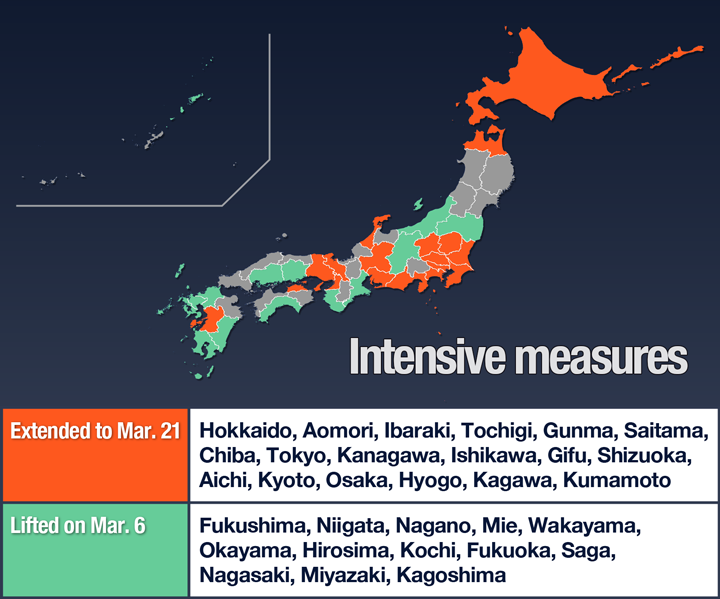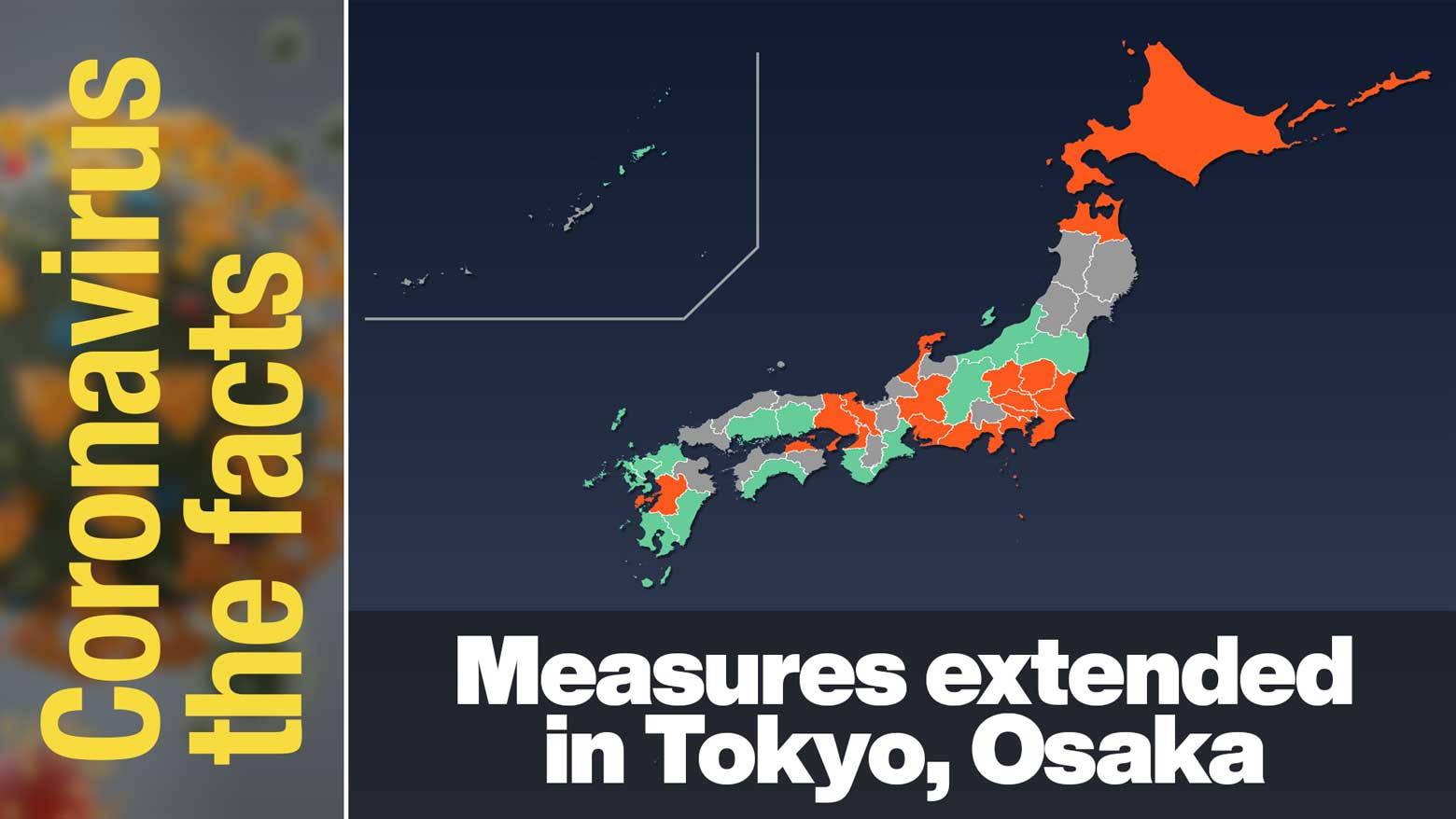This is our series on key coronavirus-related information. Click here to read other installments: #Coronavirus the facts. Find the latest information and answers from experts on everything COVID-19.
Status of restrictions

The Japanese government has extended the duration of its quasi-emergency measures against the coronavirus by two weeks in 18 prefectures. They include Tokyo, Osaka, Aichi and Hokkaido. They were due to expire on March 6, but now run through March 21.
Authorities say the infection situation is improving, but hospital occupancy rates remain high. Moreover, the decline in new cases is slow. They are aiming to reduce the burden on hospitals and quicken the uptake of booster shots. Measures for 13 prefectures were lifted as scheduled on March 6.
With the spring holiday season approaching and many events traditionally held around the end of the fiscal year, authorities are paying attention to possible surges in case numbers. They are calling on people to continue taking precautions even if measures are lifted.
As of March 3, Tokyo's seven-day average of new cases continued to exceed 10,000, and the hospital occupancy rate was 51 percent. The rate in neighboring prefectures was 56 percent in Saitama, 62 percent in Chiba and 67 percent in Kanagawa. Osaka's seven-day average continued to exceed 8,000, and the hospital occupancy rate was 71 percent, with the rate for severely ill patients at 55 percent. The hospital occupancy rate for Kyoto was 66 percent, and 67 percent in Hyogo.
Numbers expected to remain high for a while
The health ministry's panel of experts on the pandemic said last week that new cases could continue at a high level for a certain period, especially in large cities.
They say the number of severely ill patients and deaths remain high right now. As a result, hospital bed capacity for seriously ill patients could continue to be under pressure for a while due to the burden placed on the medical system by mild and moderate patients, plus an increase of serious cases among older people.
They also stress the need to accelerate the rollout of booster shots among older people. In addition, quickly getting people with underlying conditions to hospital is necessary so that they can continue receiving treatment for existing problems while infected.
Monitoring signs of possible resurgence
The government experts are also concerned about the following:
Resurgence in some areas
New cases are rising in areas where measures have been lifted, such as Okinawa Prefecture, amid an increase in the number of people gathering in entertainment districts at night.
BA.2 Omicron subvariant
Although no signs have been seen so far, it is possible that the dominant BA.1 is replaced with the BA.2, which is believed to be more infectious.
Upcoming spring events
People will have more chances to come together during Japan's fiscal year-end in March and the upcoming spring holidays. Many events, such as graduation and entrance ceremonies for schools, plus company orientations for newly hired employees, typically take place around this time.
This information is accurate as of March 7, 2022.
